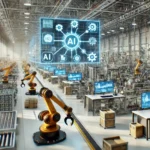Heavy machinery, diesel engines, and brute force have formed the foundation of industry for decades. Power has long been an issue in the construction industry, from the road rollers that level new highways to the loaders that shift raw materials. These days, though, power isn’t enough. The topic of discussion has changed. These days, when it comes to industrial advancement, efficiency and sustainability are king.
The bright side? Some of the machinery that used to be synonymous with polluting industries are now being rethought to power efficient, greener ones.
The Power of Loaders: Beyond Muscle
Loaders are commonly perceived as large, noisy, and obnoxious machinery that are necessary for transporting dirt and bulky materials. The tale of contemporary loaders, however, is different. Newer models have fuel-efficient engines, regenerative brakes, and even hybrid or totally electric choices to avoid constantly using fuel.
Emissions reduction is not the only goal. Loaders now have sensors and telematics that allow operators to monitor performance indicators, idle time, and fuel consumption in real time. Such information changes the way a machine is operated, from ad hoc guesswork to efficiency driven by precision. Furthermore, the effect is amplified when operators receive training on how to optimize bucket loads while avoiding engine overwork. Improved efficiency, longer lifespan, and lower fuel consumption.
Skid steers: Compact Yet Powerful
Something about the skid steer loader is exceptional. Compact, nimble, and quick to turn on, it has emerged as the mainstay of contemporary sustainable initiatives.
Not only is it smaller, which means it automatically uses less fuel, but it’s also very efficient. It’s the adaptability. Skid steers are versatile enough to replace numerous machines with just one, thanks to their many attachments. Reduced transportation, fewer engines on-site, and overall reduced carbon footprint are all results.
Also, battery-operated skid steers are becoming more popular as noise and pollution regulations in cities become more stringent. They are perfect for urban projects or even indoor settings where diesel fumes are prohibited because they provide the same power but with no pollution.
The Quiet Achievers: Plate Compactors
A big, showy piece of machinery isn’t necessary to achieve sustainability. The smallest instruments can sometimes be the most effective. Consider the plate compactor, a simple yet essential piece of machinery that guarantees the stability of the ground for structures, roads, and landscaping.
No longer are compactors limited to using fossil fuels for power; they have now embraced environmental consciousness. One of the most important factors in residential or urban settings is noise, which electric models significantly lessen in addition to cutting emissions. These days, even the most recent fuel-powered vehicles have cleaner engines built to reduce waste and increase efficiency.
Compactors reduce energy use and machine life when operated appropriately by avoiding needless passes. True efficiency is defined by better use, not merely smarter design.
Looking Ahead: Wise Decisions, Cleaner Future
Ultimately, there isn’t a single machine or choice that can make industrial workflows sustainable. A change of perspective is at the heart of it all. Select the appropriate equipment size rather than assuming that “bigger is better.” Instructions on how to use machinery effectively. Whenever feasible, purchase electric models. Ensure that fleets are regularly serviced to keep them running at their best.
On their own, each option may appear insignificant. However, when combined, they lead to a greener legacy for companies that were formerly at the forefront of environmental pressure, as well as decreased emissions, lower prices, and longer machine lifespans.
In 2026 and beyond, the amount of earth moved, or the speed of a site’s completion won’t be the primary metrics for industrial success. The level of intelligence demonstrated in achieving a balance between responsibility and production will determine its evaluation. With each new loader, skid steer, and compactor, that future is being produced.

